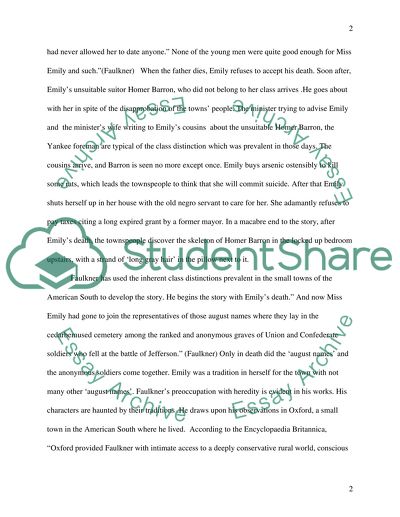Cite this document
(A Rose for Emily Book Report/Review Example | Topics and Well Written Essays - 1500 words, n.d.)
A Rose for Emily Book Report/Review Example | Topics and Well Written Essays - 1500 words. https://studentshare.org/literature/1520407-criticism-on-william-faulkner-on-the-short-story-a-rose-for-emily
A Rose for Emily Book Report/Review Example | Topics and Well Written Essays - 1500 words. https://studentshare.org/literature/1520407-criticism-on-william-faulkner-on-the-short-story-a-rose-for-emily
(A Rose for Emily Book Report/Review Example | Topics and Well Written Essays - 1500 Words)
A Rose for Emily Book Report/Review Example | Topics and Well Written Essays - 1500 Words. https://studentshare.org/literature/1520407-criticism-on-william-faulkner-on-the-short-story-a-rose-for-emily.
A Rose for Emily Book Report/Review Example | Topics and Well Written Essays - 1500 Words. https://studentshare.org/literature/1520407-criticism-on-william-faulkner-on-the-short-story-a-rose-for-emily.
“A Rose for Emily Book Report/Review Example | Topics and Well Written Essays - 1500 Words”. https://studentshare.org/literature/1520407-criticism-on-william-faulkner-on-the-short-story-a-rose-for-emily.


